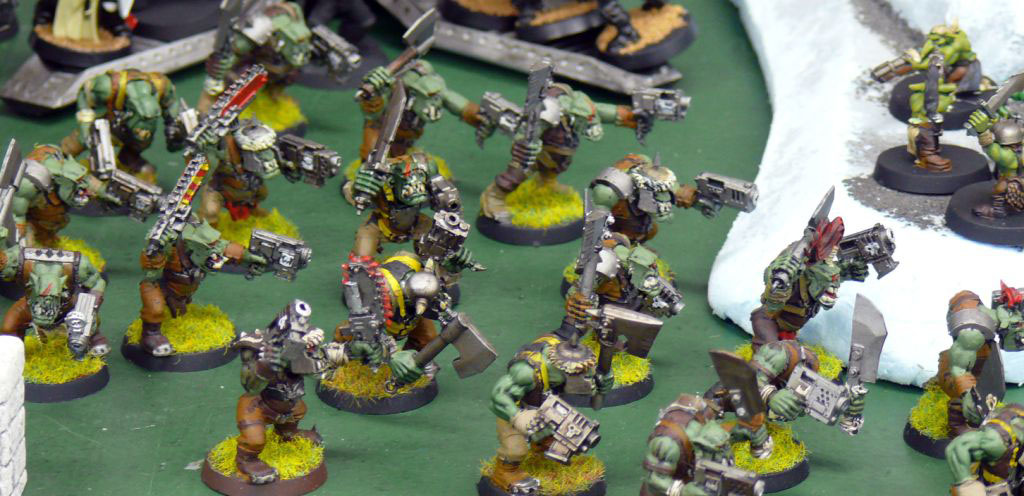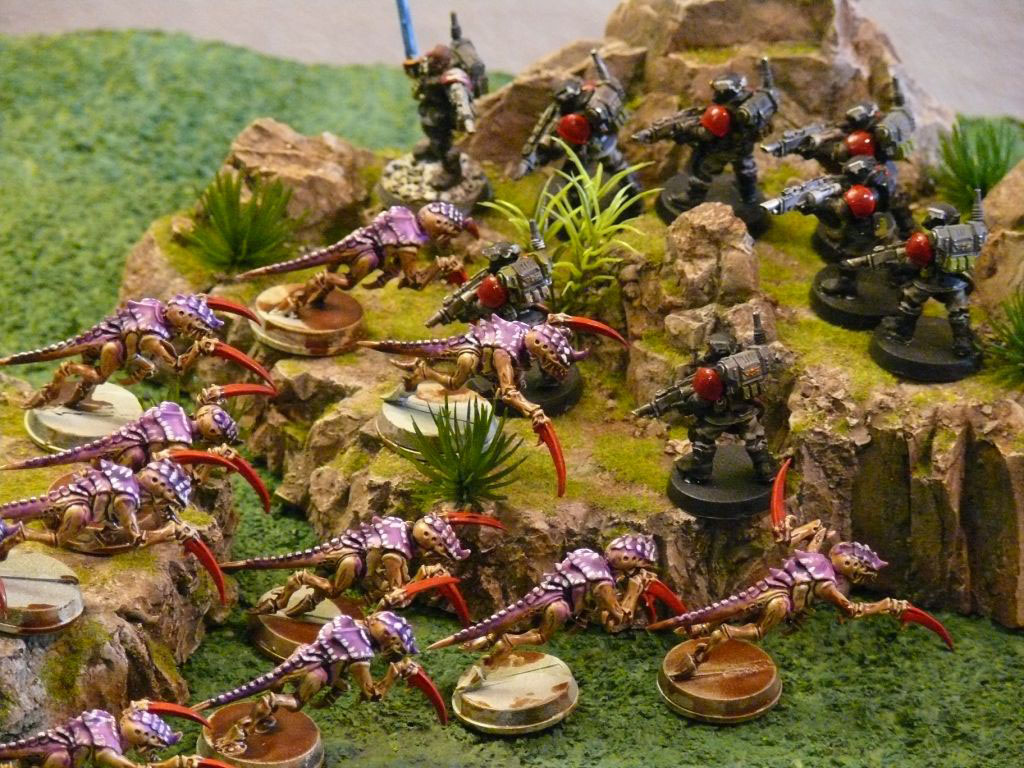40K TACTICS: Nine Principles of War – Pt. 6

A series by: Rogue428
We’ve made it to week six and we’ve covered Mass, Objective, Simplicity, Security, and Maneuver. This week we’re going to talk about the Principle of Offensive and taking the fight to your opponent.
Offensive: Seize, retain, and exploit the initiative.
“The enemy invariably attacks on two occasions: when they’re ready and when you’re not.”
-Murphy’s Laws of Combat
When we think of the Principle of Offensive, we immediately think of charging forward to engage the foe. We think of hordes of Ork Boys, or a Death Company, or Berserkers, and certainly this is not wrong. GW designed the majority of 40K armies to favor this Principle very heavily. It seems that it is far easier to list armies by exception rather than those that fit the mold. Tau and Imperial Guard immediately spring to mind as armies that would rather let opponents come to them and break against their lines rather than surge forward on the offensive. That goes for many of the ‘gun-line’ builds as well. But we shouldn’t jump to the conclusion that simply because they do not have models charging downfield, that they are not on the offensive. Anyone who has been on the receiving end of a brutal gun-line build will agree that a static army can still take the offensive with firepower.
This Principle of War really covers what some people refer to as pacing. Simply put, pacing is about knowing your army and knowing how many turns it will take for a given unit to do its planned task. For instance, you know that most deep striking units cannot assault on the turn they arrive. So it’s obvious that if you need them to assault a unit, pacing dictates that you calculate deep strike plus one turn. Therefore, if you are moving a unit across the board to support the deepstriking unit, or screen them so they aren’t shot to bits when they come in, you must take into account how long it will take that unit to get to their destination before you would ideally like the deep striking unit to come in. Another instance where pacing and taking the offensive work hand in hand is during the Assault Phase. In Fifth Edition there isn’t as a great a payoff in wiping out a unit you assaulted on your turn. That just leaves your assaulting unit vulnerable to incoming fire. The ideal pacing is to assault the target unit hard but to have it survive long enough so it can be destroyed in your opponent’s Assault Phase. This leaves your unit able to move, shoot, and assault again in your following turn. Any change to your plans (reserve rolls, immobilized transports, tied up fighting popcorn/quagmire units, etc…), disrupts your pacing to an extent and with differing degrees of severity. As one of Murphy’s Laws of Combat goes, “Failure of plan A will directly affect your ability to carry out plan B.” This Principle comes into play because pacing, and more importantly, the disruption of it, works both ways.
Offensive, when it comes right down to it, is all about disrupting your opponent’s plans and pulling off your own. The simplest way to do that is to force your opponent to react to what you’re doing instead of doing what he would want to do. In the early game, he would dearly love to blast your advancing beardy HQ unit to bits, but he didn’t count on those scouting units to be so far forward so fast and threatening his own HQ. In the later game, ‘surprise’ units that arrive by Deep Strike, or Outflank, or fast maneuvering reserves can easily disrupt an opponent’s pacing and turn control of the game back to you.
When we’re talking about ‘Seizing the Initiative’ here we’re talking about controlling the pacing and dictating the way the game will be played. A good start to doing this is to preserve your options and take away your opponent’s. Or give him so many choices he can’t address them all. The key is that the choices you present should consist of units that are viable threats independently. Ideally, you should present your opponent with a no-win scenario; he ignores one target over another at his own peril.
Finally, the key to seizing the initiative is to roll a six on that critical die roll at the start of the game. Yelling, “Six!” in a loud and high pitched voice seems to work wonders.*
(*Your experience may vary.)
Bottom Line: Try to make it so that your opponent is always reacting to your plans and not the other way around. If you find yourself in the ‘react’ mode, do something different (or unexpected) to force your opponent to give up the initiative and relinquish control of the game.
~Next time, we’ll talk about the Principle of Unity of Command. Until then, let’s talk about how to use the Principle of Offensive to disrupt an opponent’s pacing and control the initiative.
Rogue428 has been playing 40K since the start of 4th edition. He fields Dark Eldar, Tyranids, Daemonhunters, Necron, and of course, Space Marines.








